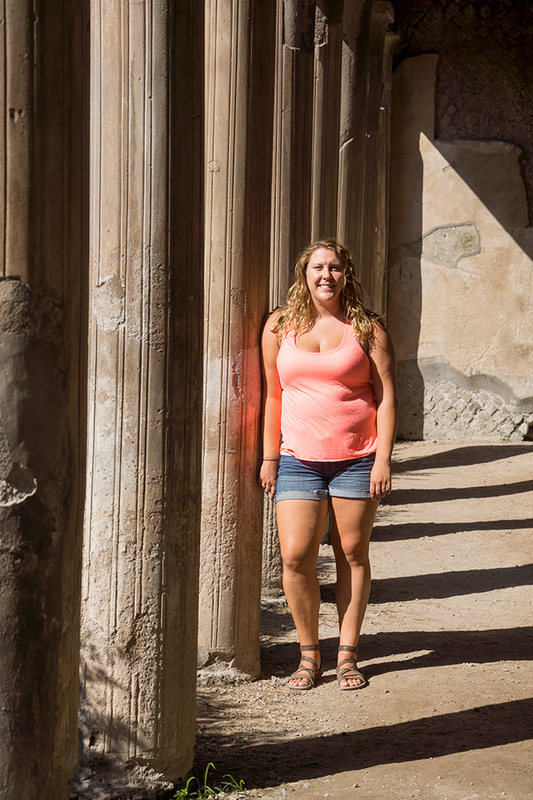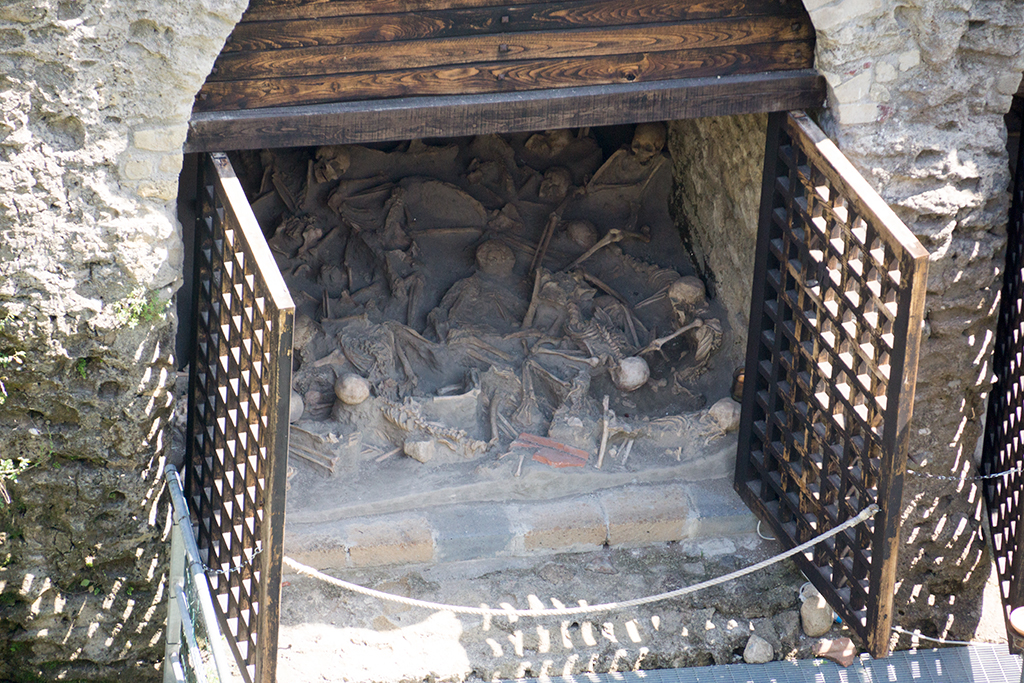1. Where are we?
Herculaneum
2. As a UNESCO World Heritage Site, it is famous as one of the few ancient cities that can now be seen in much of its original splendour, as well as for having been lost, along with Pompeii, Stabiae, Oplontis and Boscoreale, in the eruption of ____________ that buried it.
Mount Vesuvius in AD 79
3. Ancient tradition connected Herculaneum with the name of the Greek hero:
Herakles
4. In the photo above you are standing beside ceramic holes. What are they?
Fast Food Containers
5. Are those Greek or Roman columns in the photo above?
Greek
What key feature is missing from the columns so you know if they are Greek or Roman?
No base on the columns
6. Look at the columns and notice the vertical gooves that start about half way up and form surface decoration. What are these lines called?
Fluting
7. In the photo above, the image is made by placing a series of small pieces of coloured glass, stone or other materials together. What is this type of artwork called?
Mosaics
8. Who are these two?
Neptune and Salacia
9. Herculaneum was rediscovered in what year?
1709
10. How many people lived in Herculaneum at the time of the volcano eruption?
4,000 - 5,000
Herculaneum
2. As a UNESCO World Heritage Site, it is famous as one of the few ancient cities that can now be seen in much of its original splendour, as well as for having been lost, along with Pompeii, Stabiae, Oplontis and Boscoreale, in the eruption of ____________ that buried it.
Mount Vesuvius in AD 79
3. Ancient tradition connected Herculaneum with the name of the Greek hero:
Herakles
4. In the photo above you are standing beside ceramic holes. What are they?
Fast Food Containers
5. Are those Greek or Roman columns in the photo above?
Greek
What key feature is missing from the columns so you know if they are Greek or Roman?
No base on the columns
6. Look at the columns and notice the vertical gooves that start about half way up and form surface decoration. What are these lines called?
Fluting
7. In the photo above, the image is made by placing a series of small pieces of coloured glass, stone or other materials together. What is this type of artwork called?
Mosaics
8. Who are these two?
Neptune and Salacia
9. Herculaneum was rediscovered in what year?
1709
10. How many people lived in Herculaneum at the time of the volcano eruption?
4,000 - 5,000

